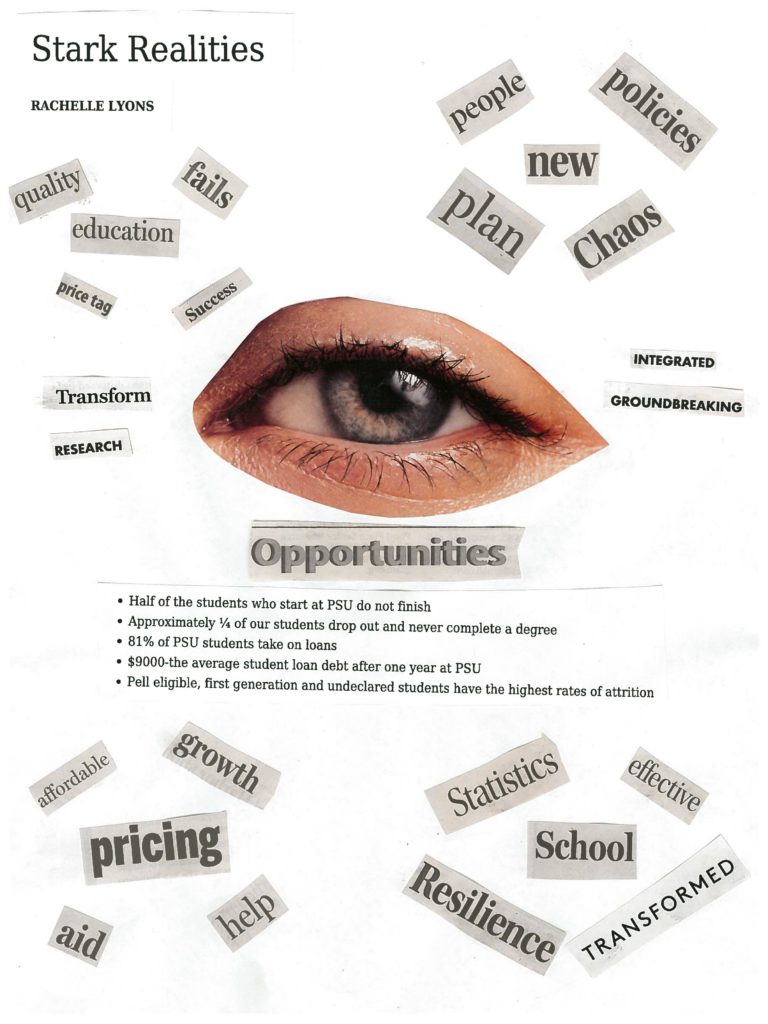85 Stark Realities
Rachelle Lyons
Summer 2019
The CPLC has provide a much needed space for consideration, exploration and collaboration around cluster pedagogy and the new landscape of higher education. Having a space to connect and build a shared understanding of our mission, vision, values and goals has provided a much needed a sense of collegiality, purpose and direction. Being with passionate, motivated colleagues has exposed me to new ideas and validated the work I have been pouring myself into.
The most important take away so far is the idea of really understanding who our students are and how we can better know and respond to their needs. Through the CPLC I have dug into reading and researching the nexus of student demographics, tuition costs, pedagogy, student success and what this means for civic, social and economic health of our community, State, and Nation. This is not novel or groundbreaking thought in the broad sense. There has been wonderful explorations of this in a handful of recent books and articles on the growing ‘opportunity gap’ (Paying the Price, The New Education, Our Kids). But do we have a good handle on PSU specific data about the realities of higher education, the promises we make to students, the risks we ask our students to take, and PSU student outcomes?
- Half of the students who start at PSU do not finish
- Approximately ¼ of our students drop out and never complete a degree
- 81% of PSU students take on loans
- $9000-the average student loan debt after one year at PSU
- Pell eligible, first generation and undeclared students have the highest rates of attrition
When we take a deeper look at the stark realities of our PSU college hopefuls, it underscores the gravity of what we do. Our day-to-day with students may not be a life or death situation, but we are having profound impact on the lives of students who attend PSU. Are we doing everything possible to ensure the impact is beneficial for students?
Are we (faculty, staff and administration) sensitive to the weight and responsibility we, as individuals and as an institution, are charged with? As we focus on retention are we really considering student needs? Are we designing retention efforts informed by evidence, driven by data and fitted to the needs of PSU students? What do we know about these students and how do we know it? What should we get more informed about? How will we know if these retention efforts are successful?



Feedback/Errata